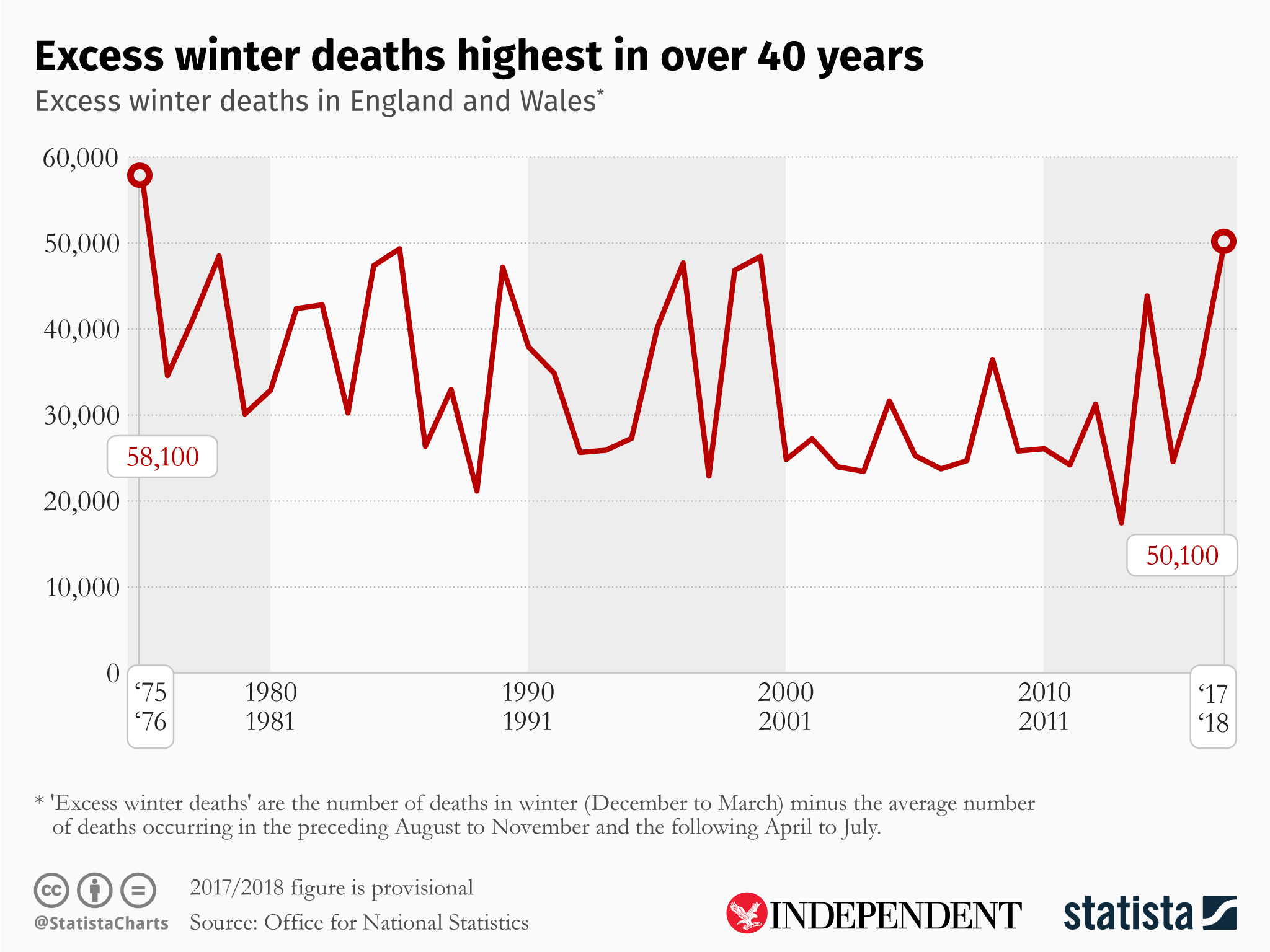Ineffective flu vaccine added to 50,000 extra deaths last winter, ONS says
Human suffering and lost lives over winter 'predictable, preventable and shameful', fuel poverty campaigners say

Your support helps us to tell the story
From reproductive rights to climate change to Big Tech, The Independent is on the ground when the story is developing. Whether it's investigating the financials of Elon Musk's pro-Trump PAC or producing our latest documentary, 'The A Word', which shines a light on the American women fighting for reproductive rights, we know how important it is to parse out the facts from the messaging.
At such a critical moment in US history, we need reporters on the ground. Your donation allows us to keep sending journalists to speak to both sides of the story.
The Independent is trusted by Americans across the entire political spectrum. And unlike many other quality news outlets, we choose not to lock Americans out of our reporting and analysis with paywalls. We believe quality journalism should be available to everyone, paid for by those who can afford it.
Your support makes all the difference.The flu vaccine’s failure to protect against some of the key strains of the infection contributed to more than 50,000 “extra” deaths in England and Wales last winter, according to data from the Office of National Statistics.
It was the worst winter on record for more than 40 years, with the 1975-76 season being the last time deaths climbed so high above the expected levels.
The NHS was rocked by a record winter crisis in early 2018, with a massive rise in flu cases and sub-zero temperatures triggered by the Beast from the East storm, which added further to death rates.
Despite protecting against the potentially serious "Aussie flu", officials said in January that the vaccine which had been widely used was not effective against some of the more prevalent strains of the virus affecting the UK.
The impact on death rates was apparent as early as March, when experts warned the government must “urgently investigate” a spike of 10,000 deaths in the first weeks of 2018.
But the ONS data, spanning December to March, shows that this trend continued to rise.

“The number of excess winter deaths in England and Wales in 2017 to 2018 was the highest recorded since the winter of 1975 to 1976,” said Nick Stripe, from the ONS Health Analysis and Life Events team."
He added: “It is likely that last winter’s increase was due to the predominant strain of flu, the effectiveness of the influenza vaccine and below average winter temperatures.”
Doctors have warned that the pressures, which carried on into summer and beyond, thanks to a major heatwave, mean the coming winter will be “more challenging than the last”.
This is not helped by the fact that the additional £20.5bn funding pledged to the NHS to help meet rising demand from an ageing population will not begin to reach services until April 2019.
However, early signs suggest the flu season this year will be less severe and the NHS has also adopted a more effective flu vaccine which provides protection against a wider range of influenza.
The ONS data shows that deaths were highest in women and those over 85, but that death rates doubled in males under the age of 64 compared with the year before.
Daily death rates exceeded the average across the last five years on every day except the 25 March, the ONS says.
Fuel poverty campaign group National Energy Action said the figures were a tragedy that do not tell the full story of millions of others falling ill and suffering because of damp, cold and inadequate housing.
“Today’s excess winter death figures should be a huge shock to the system,” said NEA chief executive Adam Scorer. “The cost in human suffering and lost lives is a tragedy. The cost to the NHS is significant and largely avoidable.
“Predictable, preventable and shameful. We seem to have accepted excess winter deaths to be as much a part of winter as darker evenings.”
Economists said the figures show the “grim reality” of the flu outbreak, and are particularly concerning as the ONS revealed earlier in 2018 that decades of improvements in life expectancy “ground to a halt” this year.
“This follows some other recent winters when seasonal deaths have been high,” said Dr Veena Raleigh, senior fellow at the King’s Fund. “With an ageing population, the worry is that this could be the start of a trend of periodically high winter deaths.”
“The evidence suggests that stalling life expectancy is due to several factors, including flu-related deaths and a slowdown in improvements in mortality from diseases such as heart attack and stroke.
“National agencies have so far been slow to respond to these disturbing recent trends. Public Health England has been commissioned to investigate the slowdown in life expectancy and it is imperative that their findings are acted upon.”
Join our commenting forum
Join thought-provoking conversations, follow other Independent readers and see their replies
Comments